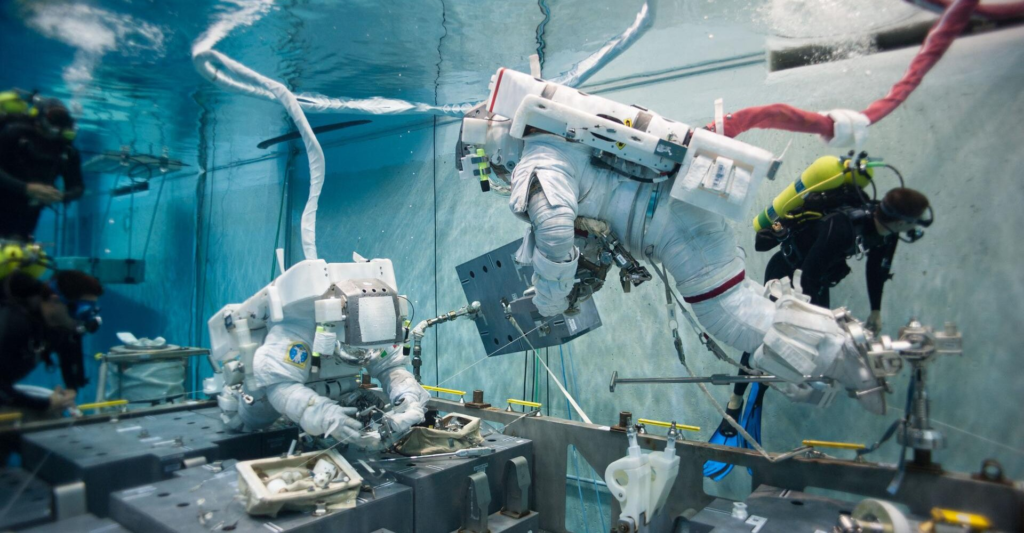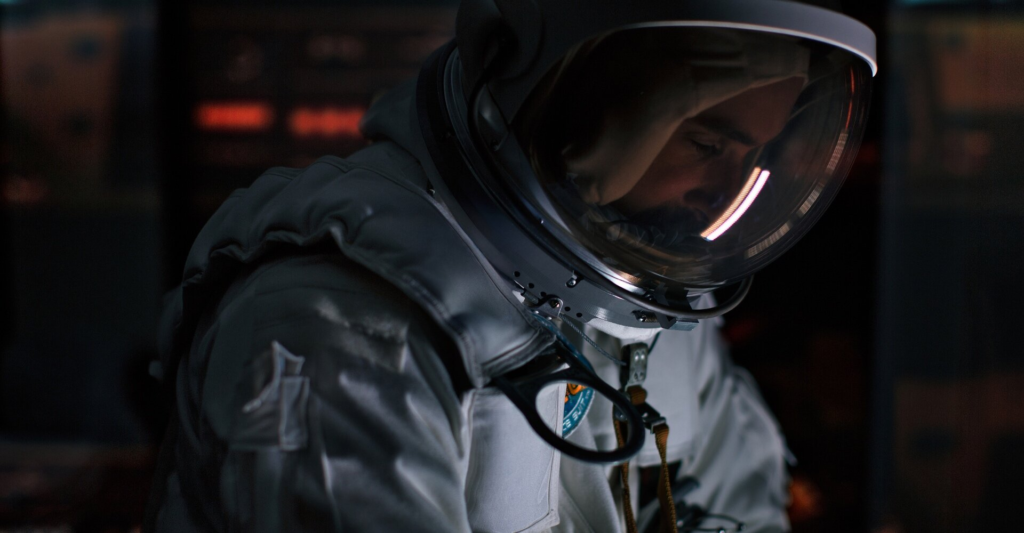
How Axiom Space Is Designing Spacesuits For The Future
NASA has big plans for the near future including returning humans to the surface of the Moon, keeping astronauts in low Earth orbit, and more. All of which require high quality spacesuits. These suits act as small spacecraft for people and allow them to move around in the vacuum of space with safety. However, the process of creating a suit that not only keeps astronauts safe but allows them to work efficiently is not easy.
Looking at current spacesuits used by NASA astronauts on the International Space Station for example, you can see some very outdated models. This also goes for the upcoming Artemis missions as well. For these reasons among others they recently contracted Axiom space and one other company to develop spacesuits for the agency’s future plans.
Axiom Space has been busy working on modules for the first commercial space station in addition to the recent Ax-1 mission. The company is also taking this contract very seriously and working on next generation equipment that will foster new discoveries and achievements. Here I will go more in-depth into Axiom’s current ideas, plans, and the contract itself.
Recent Progress

Just a month ago at the beginning of June, Axiom along with NASA announced the big news regarding the Extravehicular Activity Services (xEVAS) Contract. More specifically, Axiom was one of two companies to win the award with a potential total value of $3.5 billion across the life of the program. Under the terms of the contract, the Houston-based company will build the space agency’s next generation astronaut spacesuits that may be used for low Earth Orbit (LEO) and the Artemis lunar missions. The new spacesuits by Axiom Space are planned to provide astronauts with advanced capabilities for space exploration while providing NASA commercially developed human systems needed to access, live, and work in microgravity and on and around the Moon.
The Axiom spacesuit is key to the company’s commercial space services. This new NASA contract enables Axiom to build spacesuits that serve the company’s commercial customers and future space station goals while meeting NASA’s ISS and exploration needs. “Our innovative approach to xEVAS spacesuits provides NASA with an evolvable design that enables cost-efficient development, testing, training, deployment, and real-time operations to address a variety of EVA needs and operational scenarios for a range of customers, including NASA,” said Michael Suffredini, Axiom Space’s President & CEO. “We are immensely pleased that NASA recognizes the value Axiom Space is providing across a range of human spaceflight activities, from our recent private astronaut mission to the ISS to the design and development of Axiom Station, and now to providing this critical system and associated services for astronauts in LEO and beyond.” In terms of progress, since the announcement Axiom has not said much. However, NASA has been working on the Space Launch System and even providing dates for the first launch of the vehicle not long from now. This progress will likely correlate with the development as Axiom works to prepare these suits for not only LEO but also the next humans who step on the Moon.
Axiom & Spacesuits

Now that we know more about the initial deal and some of NASA’s progress, we can take a closer look at Axiom’s plan and some of the resources they are using. Starting with some of the company’s additional resources, they partnered with a strong team of industry experts on this spacesuit contract including KBR, Air-Lock, David Clark Company, Paragon Space Development Corporation, Sophic Synergistics, and A-P-T Research. The firm fixed price contract is structured as an Indefinite Delivery Indefinite Quantity (IDIQ) award over a 10-year ordering period and allows for two additional years for completion of services. Authorization to perform work under the xEVAS contract will be through the issuance of NASA task orders not to exceed $3.1B with a ceiling of $3.5B for all services.
Axiom highlights that its xEVAS spacesuits will be designed to accommodate a wide range of crew members. Building off of NASA’s xEMU spacesuit design, the Axiom spacesuits are created to provide increased flexibility and specialized tools to accomplish exploration needs and expand scientific opportunities in space. The xEVAS spacesuit design includes life support, pressure garments, and avionics. The Axiom Space team will provide EVA systems training and real-time operations support to NASA, among other services. They point out that NASA may order IDIQ services at any time after the contract starts with a period of performance beginning June 2022 and ending June 2032. No phase-in period is anticipated, and the work will be managed at Axiom’s Houston facilities.
This NASA contract win is the latest of Axiom Space’s list of recent accomplishments in its efforts to grow the commercial space industry. Not long ago Axiom Space celebrated the groundbreaking at the company’s new, long-term headquarters at Houston Spaceport, which will be home to the development and construction of Axiom Station, the world’s first commercial space station. Axiom Space also recently welcomed home the crew of Axiom Mission 1 (Ax-1) after successfully completing the first all-private astronaut mission to the ISS. The company has also signed agreements with several nations including Italy, Hungary, and the United Arab Emirates (UAE) to fly on future space missions. All of which are working towards greater access to space.
Focusing on the needs of a spacesuit can help put in perspective the intimidating job Axiom space has ahead of them. A fully equipped spacesuit used during spacewalks is actually a miniature spaceship shaped like a human body that protects the astronaut from the dangers of being outside a vehicle while in space or on the Moon. Spacewalking astronauts face radiation, dust, debris, and extreme temperatures. Temperatures on spacewalks may vary from as cold as minus 250 degrees Fahrenheit to as hot as 250 degrees in the sunlight. The suits provide the proper pressure for the body and supply astronauts with water to drink and oxygen to breathe. NASA highlights that the two main parts of a spacewalk spacesuit are the pressure garment and the life support system. The pressure garment is the human shaped portion of the spacesuit that protects the body and enables mobility. The primary components of the pressure garment are the cooling garment, upper torso, lower torso and helmet. The helmet on spacesuits built for spacewalks serves as a pressure bubble and is made of strong plastic to keep the pressure of the suit contained. It also has a ventilation system that provides astronauts with oxygen. Helmets also contain a small foam block that astronauts can use to scratch their noses. Outside of this bubble is a protective visor that keeps the pressure bubble from getting bumped or scratched. On top of the protective visor are the sun visor and sun shades. The sun visor has a special gold coating that works like the astronaut’s sunglasses. Together, the movable sun visor and sun shades protect the astronaut from the sun’s strong rays, while still allowing a clear visual field. The helmet on the suits that will be worn for Artemis missions will feature a quick-swap protective visor that protects against the abrasive dirt of planetary bodies. The helmet for these new suits also features an elliptical shape that provides a better view of the ground around the spacewalker’s feet.
On the back of the spacesuit is a backpack that houses the supplies and equipment to make the suit work. This backpack contains the oxygen that astronauts breathe and that pressurizes the suit. A regulator in the backpack keeps the suit at the correct pressure. A fan circulates oxygen through the suit and life support system where the carbon dioxide that astronauts exhale is removed from the suit. The backpack provides electricity for the suit and holds a two-way radio for communication. The backpack also contains water for the cooling garment, a chiller to cool the water, and a pump that circulates the chilled water. Looking at some of the current suits used by NASA, the flexible parts of the suit are made from as many as 16 layers of material. The layers perform different functions, from keeping oxygen within the spacesuit to protecting from space dust. Closest to the astronaut’s skin, the cooling garment makes up the first three layers. On top of this garment is the bladder layer that is filled with gas to create proper pressure for the body and holds in the oxygen for breathing. The next layer holds the bladder layer to the correct shape around the astronaut’s body. The ripstop liner is a tear-resistant layer. The next several layers are insulation and act like a thermos to help maintain the temperature inside the suit. These are just some of the features that Axiom Space is working to reinvent to produce a next generation spacesuit for Artemis and more.
Conclusion
Just around one month ago Axiom announced the big news regarding a new contract to develop spacesuits for humans returning to the Moon and in LEO. Since then they have highlighted a plan and some of the goals they have in regards to the spacesuits and the future of the contract. We will have to wait and see how it progresses and the impact it has on the space industry.
